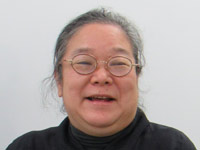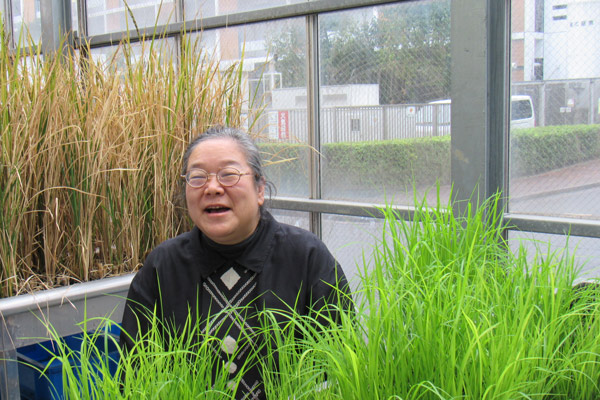Dec. 20, 2021
Accelerators accelerate many fields
Tomoko Abe, Deputy Director, RIKEN Nishina Center for Accelerator-Based Science

Please briefly describe your current research.
My group, the Beam Mutagenesis Group, has developed a unique technology to induce mutations using energetic heavy ions at RIKEN's Radioactive Isotope Beam Factory (RIBF). At relatively low doses, ion beams induce mutations at a high rate without severely inhibiting growth. The heavy-ion beam is an excellent and highly efficient tool for mutation breeding of crops and microorganisms. Focusing the beam on scions, in vitro cultured tissue and plant seeds for a short time, just seconds to a few minutes, is enough to induce mutation. Using this method, we have already put 37 new cultivars onto the market in Japan.
How did you become interested in your current field of research?
Most large accelerator facilities are used purely for experiments in nuclear physics and particle physics. However, RIKEN has a tradition of giving machine time to researchers in other fields. And we have kind but tough physicists who patiently teach biologists who dislike physics about the physics of heavy-ion beams. My own proposal for experiments in the life sciences passed the Program Advisory Committee and I was able to get machine time. During our first breeding experiments, we were able to obtain many albino mutants from tobacco plants.

Please describe your role at RIKEN.
I am not a physicist, but as the deputy director of the Nishina Center I have learned the importance and fun of physics from leading physicists. Thus, I am working to make RIBF the most user-friendly accelerator facility globally for non-physics researchers, and to promote research in applied areas, including plant breeding. China and South Korea plan to start operating their large accelerator facilities in the next few years, with a view to applied research. There are as many types of radiation in heavy-ion beam as there are ion species and energies. I would like to cooperate with researchers in each country to develop ion-beam breeding technologies tailored to each accelerator facility's characteristics.
“My research is important for sustainable development or society because…”
Some variants can be more sustainably farmed, including salt-resistant rice, high-yield rice, high-yield seaweeds, high oil-content algae and larger zooplankton.
What excites you the most about your current research?
It has been exciting to find many unexpected mutants using our method. For example, the S1200 line of Satsuma mandarin in Shizuoka prefecture is a late coloring one that is harvested about a month later than the original variety, but the fruits are sour when harvested. As the harvest time of the Satsuma mandarin has tended to come earlier due to global warming, it is desirable to breed new varieties suitable for long-term storage. 'Harushizuka', which was recently bred from the S1200 line, is suitable for long-term storage and the fruits turn into good quality sweet oranges during storage. They sell at a high price in March and April when oranges are in short supply, and this makes farmers happy.
